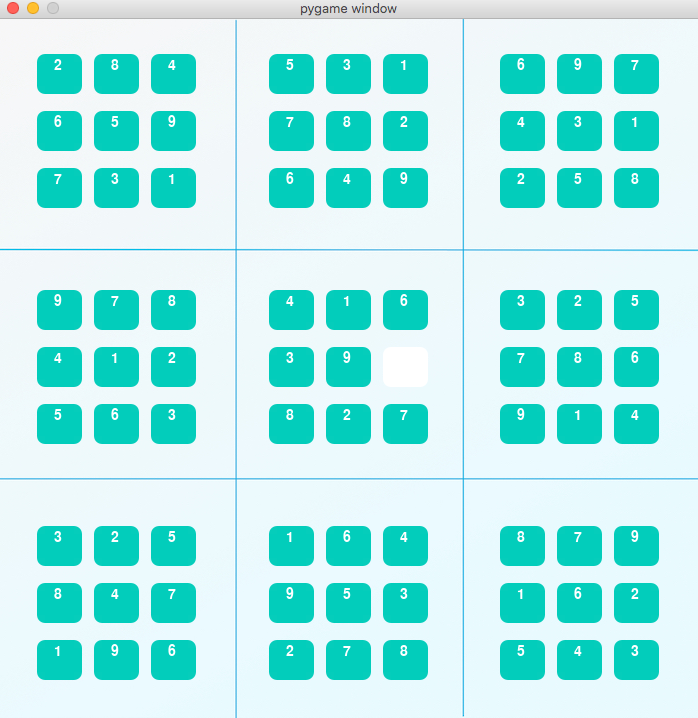Constraint Propagation is all about using local constraints in a space to dramatically reduce the search space. In the case of Naked Twins, the constraint is that if the same box value pair appears in the column unit or row unit, then all other boxes in the square unit cannot contain the pair of values in those two boxes. As we enforce each constraint, we see that it introduces new constraints for other parts of the board that can help us further reduce the number of possibilities.
Constraint Propagation is all about using local constraints in a space to dramatically reduce the search space. In the case of Diagonal Sudoku, among the two main diagonals, the numbers 1 to 9 should all appear exactly once. As we enforce each constraint, we see that all other boxes on the diagonal cannot contain any values previously seen.
This project requires Python 3. You'll also want to download Anaconda in order to reproduce the results.
Optionally, you can also install pygame if you want to see your visualization. Please see how to download pygame here.
solutions.py- Sudoku solver.solution_test.py- You can test your solution by runningpython solution_test.py.PySudoku.py- This is code for visualizing Sudoku solver.visualize.py- This is code for visualizing Sudoku solver.
Here is a screenshot of a solved puzzle:

To visualize your solution, please only assign values to the values_dict using the assign_values function provided in function.py
The data consists of a text file of diagonal sudokus for you to solve.